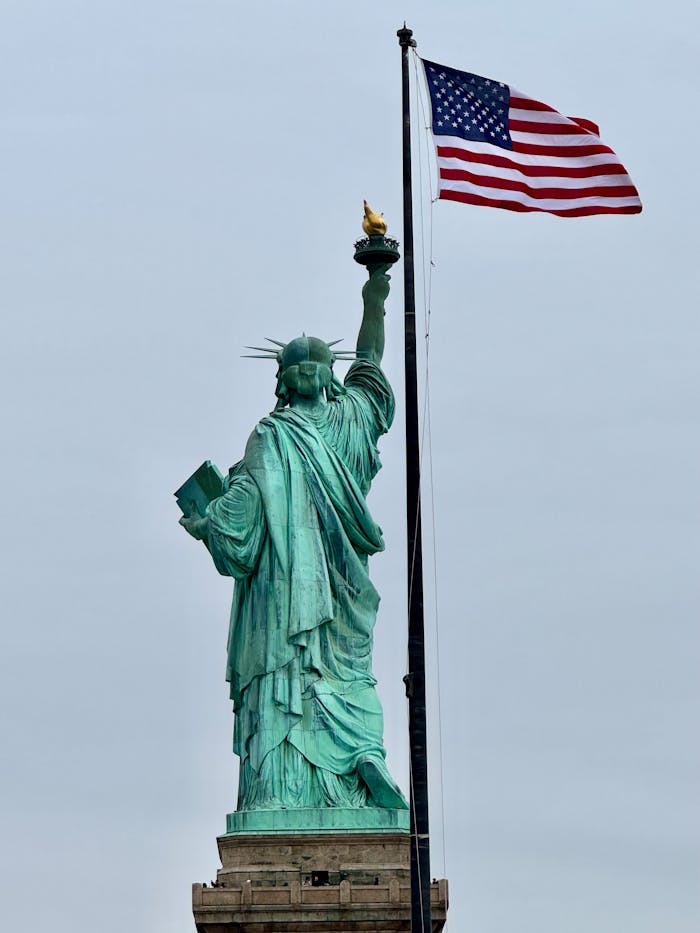If you’re engaged to a U.S. citizen and want to live together in the United States, the K-1 fiancé(e) visa is often the first step in your immigration journey. This nonimmigrant visa allows a foreign fiancé(e) to enter the U.S. for the purpose of getting married—but there are strict requirements and timelines to follow.
In this article, we’ll walk you through the entire K-1 visa process—step by step—from eligibility and filing to visa approval and entry into the United States.
What Is a Fiancé(e) Visa?
The K-1 fiancé(e) visa is issued by the U.S. government to a foreign national who is engaged to a U.S. citizen. It allows the visa holder to enter the U.S. to get married within 90 days of arrival.
After marriage, the foreign spouse can apply for a green card through adjustment of status.
Step 1: Confirm Your Eligibility
Before starting the application, make sure you and your fiancé(e) meet the basic requirements:
- The sponsor must be a U.S. citizen (not just a green card holder)
- Both parties must be legally free to marry
- You must have met in person within the past 2 years
- You must intend to marry within 90 days of the foreign fiancé(e)’s arrival
- The U.S. petitioner must meet income requirements to support the fiancé(e)
If you haven’t met in person due to cultural, religious, or hardship reasons, you can request a waiver—but approvals are rare.
Step 2: File Form I-129F with USCIS
The process officially starts when the U.S. citizen files Form I-129F, Petition for Alien Fiancé(e) with USCIS.
What to include:
- Proof of U.S. citizenship (passport, birth certificate)
- Proof of relationship (photos, messages, travel records)
- Proof of in-person meeting within the last 2 years
- Signed statements from both parties confirming the intent to marry
- One passport-style photo from each person
- Filing fee (currently $535)
Mail your packet to the correct USCIS address, based on the location specified in the instructions.
Step 3: Wait for USCIS Approval
After you file Form I-129F:
- You’ll receive a Receipt Notice (I-797C) in 2–4 weeks
- USCIS will review your petition (takes ~6–9 months)
- If approved, the case is sent to the National Visa Center (NVC)
You won’t be contacted during this time unless there’s a Request for Evidence (RFE). If that happens, respond quickly and with complete documentation.
Step 4: Submit the DS-160 and Prepare for the Interview
Once the NVC forwards your approved petition to the U.S. embassy or consulate in your fiancé(e)’s country, the foreign partner must complete Form DS-160—the standard nonimmigrant visa application.
To prepare:
- Fill out the DS-160 online and print the confirmation page
- Pay the K-1 visa application fee (currently $265)
- Schedule the visa interview at the designated U.S. embassy/consulate
- Complete a medical exam with an approved physician
- Gather the required documents for the interview (see next section)
The embassy will provide specific instructions, so read all notices carefully.
Step 5: Attend the Visa Interview
The visa interview is conducted at a U.S. embassy or consulate abroad. Only the foreign fiancé(e) attends.
Bring the following:
- Valid passport
- DS-160 confirmation page
- Visa appointment letter
- Medical exam results (sealed)
- Birth certificate (original + translation)
- Police clearance certificate(s)
- Divorce or death certificates (if previously married)
- Proof of ongoing relationship (photos, texts, calls)
- Form I-134 (Affidavit of Support) from the U.S. sponsor
- Two passport-style photos
The officer will ask questions about your relationship, future plans, and background. Be honest, calm, and clear.
If approved, the visa will be issued in a few days to a few weeks.
Step 6: Enter the United States
Once the K-1 visa is issued, the foreign fiancé(e) must:
- Travel to the U.S. within 6 months of visa issuance
- Marry the U.S. citizen within 90 days of entry
This deadline is strict. If the marriage doesn’t happen within 90 days, the foreign national must leave the country, or they’ll be out of status and risk removal.
After marriage, the foreign spouse can apply for a green card by filing Form I-485 (Adjustment of Status).
Real-World Example: A Smooth Fiancé Visa Journey
Elena, a Ukrainian citizen, and Jake, a U.S. citizen, met while studying abroad. After staying in touch and visiting each other’s families, they decided to get engaged. Jake filed Form I-129F in January. It was approved in September. Elena had her interview in Kyiv in November, entered the U.S. in December, and they married in January. They submitted her green card application the following month.
Because they followed each step carefully and prepared strong evidence, their case moved smoothly without delays.
FAQs: Fiancé(e) Visa Process
Q1: Can green card holders file for a K-1 visa?
No. Only U.S. citizens can petition for a K-1 fiancé(e) visa.
Q2: Can my fiancé(e) work after arriving in the U.S.?
Not immediately. They must file Form I-765 after marriage to receive a work permit.
Q3: Can we marry outside the U.S. and still use the K-1 visa?
No. The K-1 visa is only valid if the marriage occurs inside the U.S. within 90 days of arrival.
Q4: How long does the fiancé(e) visa process take?
Typically 9–13 months from filing to arrival, but timelines vary by case and country.
Q5: Can we apply for a tourist visa instead while waiting?
Be cautious. Using a tourist visa with intent to marry and stay may be considered visa fraud.
Final Thoughts: Plan Carefully, Stay Organized
Applying for a fiancé(e) visa is a major step—but with the right planning, it’s absolutely manageable without a lawyer. Focus on accurate paperwork, honest evidence, and consistent communication throughout the process.
Once your fiancé(e) arrives, remember that the clock starts ticking. Get married within 90 days, then move forward with adjustment of status. If your relationship is genuine and you follow the steps, you’re well on your way to building your life together in the U.S.



